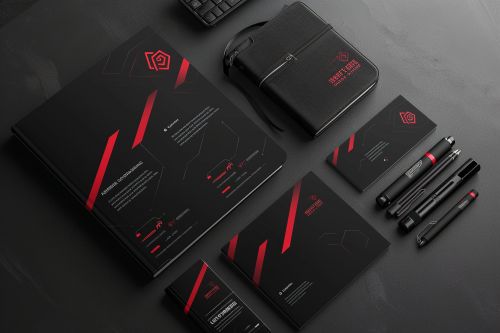

Some brands are instantly recognisable—no one needs to explain what Nike or Coca-Cola is (even to a child)—their names alone bring to mind specific associations. In the customer’s imagination, their colours, slogans, and products come to life.
Maintain brand consistency to build a successful marketing strategy. Every customer interaction with a company should deliver a similar experience, regardless of the communication channel. The marketing message, visual elements, values, and tone should reflect the consistent brand identity in a way anticipated by customers.
Contents
Why is your brand’s consistency important?
According to analyses published by Global Banking and Finance Review, a whopping 71% of customers emphasise that brand recognition is an important factor in making a purchase decision. This explains why as many as 89% of marketers consider building brand awareness their primary mission.
Achieve brand consistency to build a strong, recognisable, and trustworthy company. It aids in quick identification by customers. In the face of intense competition, it is increasingly difficult to cut through advertisements’ clutter and products’ abundance. When a consumer sees a distinctive logo or hears a familiar slogan and immediately associates it with your brand, you have achieved success.
Trust is equally indispensable. Customers value predictability and reliability. When a brand consistently communicates the same values and maintains a high standard of quality, it makes them feel safer. This encourages them to choose the same company again.
A lack of consistency makes a brand appear chaotic. Frequent changes in concept create confusion and severely damage a business. They may even lead to the loss of customers.
Maintaining brand consistency is largely a matter of visual identification. This includes the logo, colour palette, fonts, graphics, and photos. These elements should be consistently used across all materials—on websites, social media, and in advertisements.
How a brand communicates with its audience should be consistent across different media. This applies to the tone and style of communication, whether through text or video.
Brand values represent the core beliefs and values that a company wants to promote. When these are present in communications, they build trust and customer loyalty. This helps consumers understand what they can expect from the brand.
The customer experience at every point of interaction should be consistent. A premium brand must leave a premium impression.



Challenges in brand consistency
Every brand faces numerous obstacles that disrupt its unified image and communication. These include rapidly changing technologies, the multitude of communication channels (each with its own specifics), and diverse customer expectations. Managing brand consistency requires creativity and strategic planning.
Communication discrepancies across different channels
Brands communicate through social media, emails, online and offline advertisements. Given the number of platforms available for interacting with customers, it is easy to lose track of the tone, style, or marketing message.
Consider this example: if a Facebook ad campaign presents the brand as friendly and informal, but its press materials sound formal, customers might feel confused about what to expect from the product or service.
Inconsistent messaging diminishes trust and reduces customer loyalty. When consumers encounter conflicting messages, they feel uncertain about the quality and value of the brand’s offerings. This naturally affects their purchasing decisions. Consistency helps position the company in consumers’ minds. Inconsistent messages disrupt this image and cause the brand to lose recognisability.
To address these challenges, you can implement several effective solutions:
- Develop and implement a unified communication strategy for all customer interactions. The plan should define the brand’s message and tone. Ensure that all team members are on the same page.
- Utilise content management systems and other tools that aid in content publication and management. This facilitates quick updates when the need arises.
- Conduct regular training for everyone involved in brand communication. The workshops should focus on techniques to maintain a consistent style across all communication materials.
Maintaining consistent quality in products and services
Maintaining consistent quality in products and services is another significant challenge for companies aiming to develop a recognisable brand. A decline in quality always severely damages the reputation.
Consumers expect a consistent experience with a product or service. Imagine a restaurant known for its excellent burgers made with fried cheese and local ingredients. If the taste varies significantly from day to day or when prepared by different chefs, guests will feel disappointed and might never return.
Inconsistency destroys consumer trust. Customers who encounter lower quality once start to doubt the value of the brand. They might also leave negative reviews. Nothing impacts sales more than a 1-star review on Google or other trusted website.
Regardless of the size of the company, the solution to maintaining consistent product or service quality involves:
- Implementing quality control procedures at every stage of the production or service delivery process.
- Conducting regular audits to identify quality issues before they escalate into larger problems.
- Establishing standards for products or services.



Managing a brand during a crisis
Brand management during a crisis is a real test for any business. A crisis takes various forms: financial troubles, public scandals, or sudden market shifts. In such moments, maintaining consistent communication and a positive image becomes particularly challenging.
The first step in effective crisis management is to create a robust plan. A crisis management plan should outline who is responsible for communication, which channels will be used to disseminate information, and how the company plans to address each scenario. This ensures the team knows how to act before the situation intensifies.
Brand management during a crisis requires swift and transparent communication. Customers and stakeholders expect immediate responses. Transparency in actions reduces the negative impact on the company’s image. During these times, every word counts; a response that is too slow or unclear only worsens the situation.
Information spreads rapidly. Monitoring what is being said about the brand in social media, the press, or online forums allows for quick responses to any negative comments or rumours.
Brand consistency: Important
Managing brand consistency can be refined by applying proven strategies and tips from industry experts.
Here are some best practices that help maintain a unified brand image:
- Define your identity: Before you start communicating with the world, make sure you have a clear definition of what your brand represents. The values, mission, vision, and tone of voice should be well-documented and understandable to everyone on your team. Consistent communication always begins in-house.
- Create a brand guide: A brand guide, or brand book, is a useful tool that should include guidelines on the logo, colour palette, typography, graphic style, communication tone, and other elements. This guide ensures that regardless of who creates the content, it remains consistent with the brand identity.
- Train your employees: Everyone hired should be familiar with the brand guide. This familiarity ensures that every team member can accurately represent and reinforce the brand in their roles.
- Monitor your actions: Regularly check how your brand is perceived to ensure it aligns with your expectations. Read reviews, comments, and social media feedback to check public perception and respond appropriately.
Implementing these practices significantly enhances your brand’s consistency and recognition in the market.
Tools for brand message consistency
Companies use tools to better streamline their communication. One such tool is Digital Asset Management software. DAM systems are used for the storage, organisation, and sharing of marketing and graphic materials. This ensures that all assets are consistent with brand guidelines. These programs help marketing teams respond quickly to changing market conditions.
Another tool is Content Management Systems. CMS makes it easier to manage websites, blogs, and e-commerce platforms. All texts, images, and multimedia are published from a single point within the company network. There is a possibility to plan the content ahead of time.
Marketing automation software integrates various components of marketing campaigns. These systems streamline marketing efforts and allow for the collection and analysis of data on user behaviour.
Brand consistency in social media
Brand consistency in social media means uniformity in message, appearance, and tone of communication. These elements together create a trustworthy brand.
To create a visual identity on social media, you need to take care of how your posts look like. They should include corporate colours, logos, typography, and graphic style.
If a brand has a colour palette that consists of blue and silver, these colours will dominate all its social media profiles.
You should choose one communication tone (formal, friendly, humorous, light) that best suits your target audience.
A brand aimed at young people might use casual language and contemporary slang, while a B2B company would likely maintain a more professional tone.
Brand consistency is about the type and quality of content posted. All posts should align with the brand’s core values and message. Do not create content if you are unsure whether it aligns with your company’s main objectives.
Regular posting is good for visibility. It keeps the brand present in the audience’s mind. Companies should establish a posting schedule that is adhered to across all channels to maintain audience interest.
Consistency includes how you interact with users. The way you respond to comments, questions, and complaints should align with the company’s overall values.
Brand consistency: Examples
Apple excels at maintaining brand consistency. Its communication is simple, features modern design and looks innovative. These elements are reflected at every point of contact with the company: the products, the marketing, and store aesthetics. All devices share a similar look, easily recognisable from a distance. Customers perceive Apple as a user-friendly and modern brand.
In contrast, Gap experienced problems with brand consistency when it attempted to change its logo in 2010. The new logo was intended to refresh the brand’s image, but it was poorly received by customers. This confused clients and led to numerous protests. Ultimately, Gap reverted to its original logo. This situation demonstrates that sudden changes disorient and discourage brand advocates.
Starbucks is another brand that manages its brand consistency effectively. Across its locations (over 32,000 outlets in 80 countries), there is a similar ambience. The stores look nearly identical, and the menus are consistent. The iconic sizing names for beverages—Short, Tall, Grande, and Venti—set the chain apart from others. The company often communicates its values: social responsibility and commitment to environmental initiatives.



Translation for consistent branding
Our translation agency specialises in high-quality language services that convey the essence of your brand across different languages and cultures. Every text carries values and brand voice that must be preserved to ensure your company is recognised worldwide.
We translate marketing materials, websites, and software, collaborating with experienced translators who specialise in nearly every industry. We provide translations tailored to your sector and the expectations of your audience.
Maintaining brand consistency in translations is our priority. We work closely with clients to understand their unique requirements and communication tone. We use CAT tools that help maintain uniform terminology throughout the project. If your company is aiming for global expansion, contact us.











